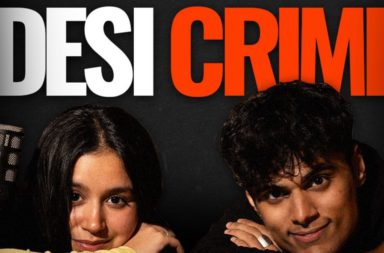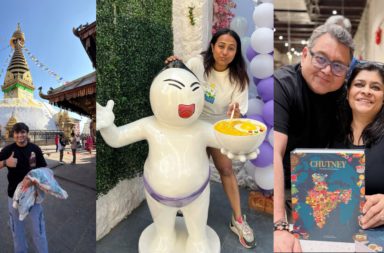“Garba and Dandiya Raas” is what makes Navratri the lively festival that it is. Garba lovers wait all year, to dance their hearts out on these 9 days. The upbeat traditional Gujarati folk music can get everyone’s feet tapping. It’s a vibrant and spirited dance form that is at the epicentre of Navratri celebrations. And dandiya is played with pairs of wooden sticks which are used to create rhythmic patterns in sync with the music. This traditional folk dance originated in the western Indian state of Gujarat, but its popularity has spread across the country and beyond, making it an integral part of Navratri festivities worldwide. The dance embodies the celebration of feminine energy, strength, and divinity.
The word “Garba” is derived from the Sanskrit term “Garbha,” which means womb, signifying the source of life. That’s why this dance is performed in circles, symbolizing the cyclical nature of life, creation, and the cosmos. Participants move in a synchronized manner, gracefully swirling and clapping to the beat of the music. The dance form is characterized by its distinctive music, which is typically accompanied by traditional instruments like the dhol, dholak, and tabla. The melodies are upbeat and melodious, creating an electrifying atmosphere that encourages participants to immerse themselves in the dance.

Also Read: Diksha Sachdev On How To Get Your Navratri Makeup Game On Point
The Significance of Garba
Professional Garba dancers practice for months on end before Navratri to perfect their dance steps. This dance form is not only a physical expression of joy and devotion but also holds deep cultural significance. It is performed to pay homage to the goddess Durga in her various forms, including Amba, Shakti, and Ambe. The dancers are dressed to the nines as they let loose to the folk music and perform their best.
The dance moves in Garba are intricate and often symbolize the different aspects of nature, such as the sowing of seeds, the swaying of crops, and the circular motion of the Earth. In recent years, Garba music and dance have evolved beyond their traditional roots and have found a place in contemporary culture. Fusion Garba dance incorporates elements of other dance forms, giving it a modern twist while still honouring its traditional essence.

Team Naach
When it comes to dancing, no one aces it like Team Naach, especially when it comes to Indian folk music. Team Naach comprises two exceptional choreographers Nicole Concessao and Sonal Devraj along with dance instructors Yoshetaa Jogi and Andrea Quadros. They conduct various workshops across the country, charming everyone with their stunning routines and choreographies. Of them, Yoshetaa is a trained Kathak dancer and instructor who brings immense grace and flow to Team Naach. Along with choreography, Yoshetaa also spearheads management and execution responsibilities at the company.
The Social Nation team spoke with Yoshetaa to get some Garba tips during this festive season. Read on to know more.
Which are the most popular Garba steps that one should learn before going for a Garba night?
“Clapping along with footwork and spins are the basics. ‘Ek Taali’ (one clap), ‘Bey Taali’ (two claps) ‘Tran Taali’ (three claps) – these are the most easiest movements that one should learn.”
How do you ensure you last on the dance floor the entire time without getting tired? Any insider secrets?
“Eat well prior. I always keep a bottle of water to sip on. It’s key! The secret is practice, but also dancing like every moment counts. You see all these beautiful dancers out there dancing their hearts out and feel how are they doing that? It’s because they practice the whole year and give their best during Navratri.”
How do you manage to dance while ensuring your outfit and makeup stays in place?
“A lot of people will say, dress to kill. But I’m a big believer of ‘wear what’s comfortable’. It ensures you have one less thing to worry about and have a good time while dancing. Personally, I prefer light makeup. Sweating while dancing is bound to happen anyway. I style my hair in bun best to dance with no hair coming on my face, and to make sure everyone can see my big bright smile.”
Can you share some tips for beginners who want to try their hands at Garba for the first time?
“Do it yourself. Dance it out at home. It’ll take some time, but you’ll get there. If you need a start, then join a class and start practicing moves before Navratri. It’s a whole lot of fun with everyone! Having fun while dancing is possible only if you don’t take it too seriously. There are many dance companies out there who teach traditional Garba. My fav is the Thangaat Group.”
Are there any specific Garba dance steps that you think resonate best with your style of dance?
“Oh, it has to be the spins and graceful hand movements.”
So, are you ready to groove to the beats of Gujarati folk music this Navratri? Aye Halo!


